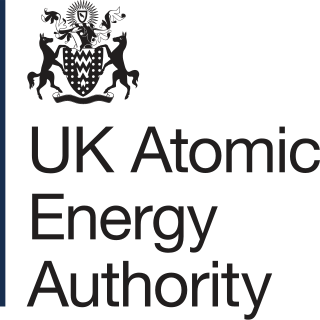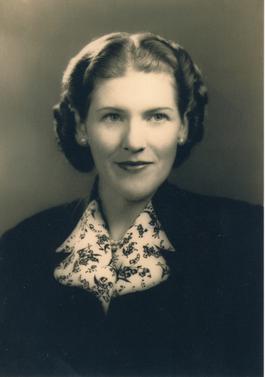
The Atomic Energy Research Establishment (AERE) was the main centre for atomic energy research and development in the United Kingdom from 1946 to the 1990s. It was created, owned and funded by the British Government.

The Atomic Weapons Establishment (AWE) is a United Kingdom Ministry of Defence research facility responsible for the design, manufacture and support of warheads for the UK's nuclear weapons. It is the successor to the Atomic Weapons Research Establishment (AWRE) with its main site on the former RAF Aldermaston and has major facilities at Burghfield, Blacknest and RNAD Coulport.

The United Kingdom Atomic Energy Authority is a UK government research organisation responsible for the development of fusion energy. It is an executive non-departmental public body of the Department for Business, Energy and Industrial Strategy (BEIS).

Dounreay is a small settlement and the site of two large nuclear establishments on the north coast of Caithness in the Highland area of Scotland. It is on the A836 road nine miles west of Thurso.

The Civil Nuclear Constabulary (CNC) is a special police force responsible for providing law enforcement and security at any relevant nuclear site and for security of nuclear materials in transit within the United Kingdom. The force has over 1,500 police officers and support staff. Officers within the force are authorised firearms officers, due to the nature of the industry the force protects.
PLUTO was a materials testing nuclear reactor housed at the Atomic Energy Research Establishment, a former Royal Air Force airfield at Harwell, Oxfordshire in the United Kingdom.

An authorised firearms officer (AFO) is a British police officer who is authorised and trained to carry and use firearms. The designation is significant because most police officers in the United Kingdom do not routinely carry firearms, although they can be equipped with tasers. The only forces where officers are routinely armed are the Police Service of Northern Ireland, the Ministry of Defence Police, the Civil Nuclear Constabulary, Belfast Harbour Police and the Belfast International Airport Constabulary.
ESR Technology was formerly the engineering, safety and risk business of AEA Technology, which was formed from the commercial arm of the United Kingdom Atomic Energy Authority. It specializes in the provision of technical expertise, products, and services to help customers ensure asset integrity, improve machine reliability, manage safety and risk, and transfer best practice. It has customers across many sectors, including oil and gas, rail, utilities, aviation, and space and defense. It operates three centers of excellence: the National Centre of Tribology, European Space Tribology Laboratory, and the National Non-Destructive Test Centre.

Lorna Margaret Arnold was a British historian who wrote a number of books connected with the British nuclear weapons programmes.

Margaret Mary Gowing, was an English historian. She was involved with the production of several volumes of the officially sponsored History of the Second World War, but was better known for her books, commissioned by the United Kingdom Atomic Energy Authority, covering the early history of Britain's nuclear weapons programmes: Britain and Atomic Energy 1939–1945, published in 1964, and the two-volume Independence and Deterrence: Britain and Atomic Energy 1945–52, published in 1974.

The Harwell Science and Innovation Campus is a 700-acre science and technology campus in Oxfordshire, England. Over 6,000 people work there in over 240 public and private sector organisations, working across sectors including Space, Clean Energy, Life Sciences and Quantum Computing.
ROF Risley, was a large World War II Royal Ordnance Factory filling munitions, including the Grand Slam bomb, in the UK. It is located roughly halfway between Liverpool and Manchester.
The Civil Nuclear Police Authority is the police authority that oversees the Civil Nuclear Constabulary. A police authority is a body corporate in the United Kingdom that defines strategic plans for a police force and provides accountability so that the police function "efficiently and effectively". The authority was created in 2004 by the Energy Act 2004. The authority is subject to freedom of information requests.

The Ministry of Defence Police (MDP) is a civilian special police force which is part of the United Kingdom's Ministry of Defence. The MDP's primary responsibilities are to provide armed security and counter terrorism services to designated high-risk areas, as well as uniformed policing and limited investigative services to Ministry of Defence property, personnel, and installations throughout the United Kingdom. The MDP are not military police and should not be confused with the Royal Military Police or any other British Service Police. Service personnel often refer to the MDP by the nickname "MOD plod".

Sir William Leonard Owen was a British civil engineer and nuclear engineer. As Director of Engineering at the British Atomic Energy Project, he oversaw the construction of the Springfields Chemical and Fuel Element Plants, the Windscale Piles, Windscale plutonium extraction plant, Capenhurst gaseous diffusion plant and the Calder Hall nuclear power station.

The Atomic Energy Authority Act 1954 is an Act of the Parliament of the United Kingdom which established the United Kingdom Atomic Energy Authority with powers to produce, use and dispose of atomic energy and to carry out research into this and related matters.

The Atomic Energy Authority Act 1959 is an Act of the Parliament of the United Kingdom which amended and extended the constitution and powers of the United Kingdom Atomic Energy Authority.
The National Institute for Research in Nuclear Science was a UK Government establishment that provided equipment and facilities for nuclear research that would otherwise be beyond the financial capability of individual universities and other nuclear research establishments. It operated from 1957 to 1965.

Calder Hall Nuclear Power Station is a former Magnox nuclear power station at Sellafield in Cumbria in North West England. Calder Hall was the world's first full-scale commercial nuclear power station to enter operation, and was the sister plant to the Chapelcross plant in Scotland. Both were commissioned and originally operated by the United Kingdom Atomic Energy Authority. The primary purpose of both plants was to produce weapons-grade plutonium for the UK's nuclear weapons programme, but they also generated electrical power for the National Grid.













